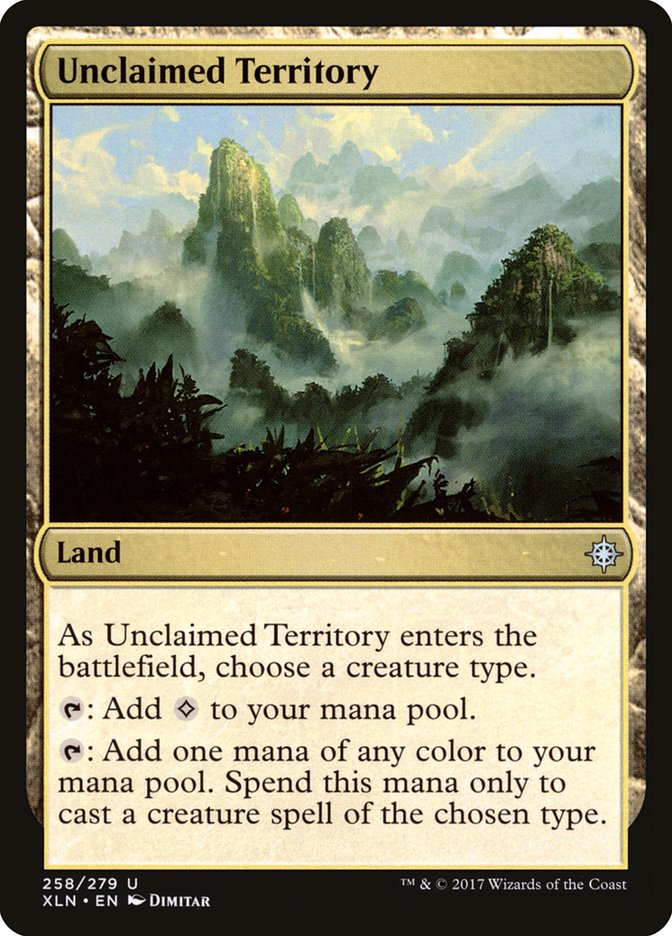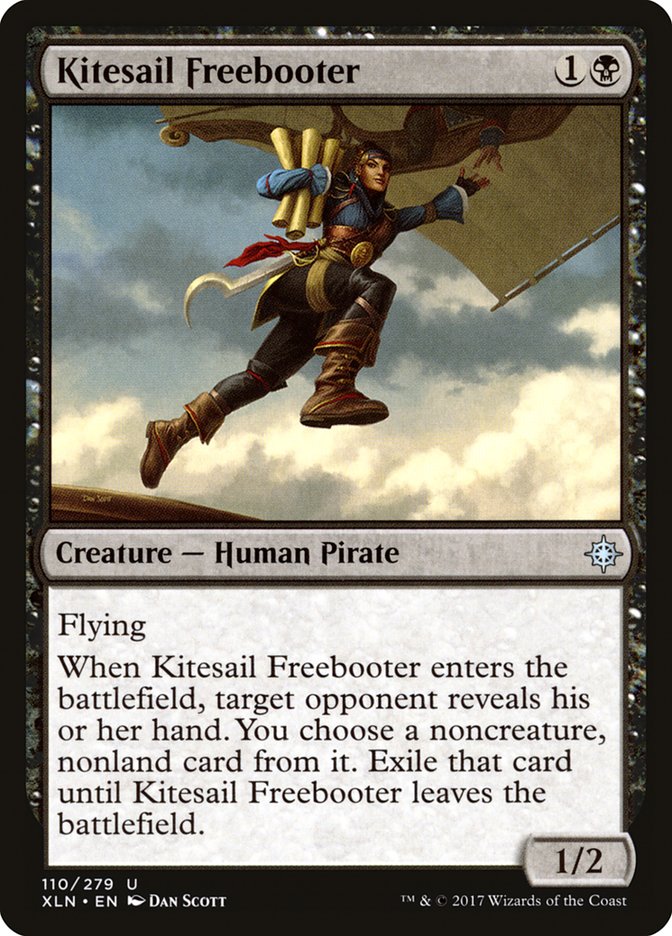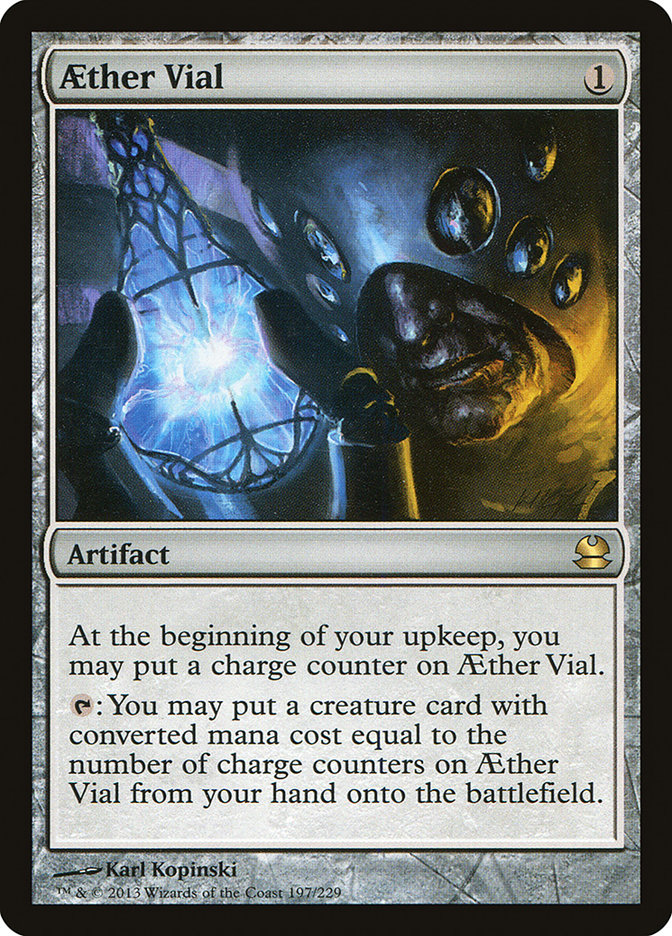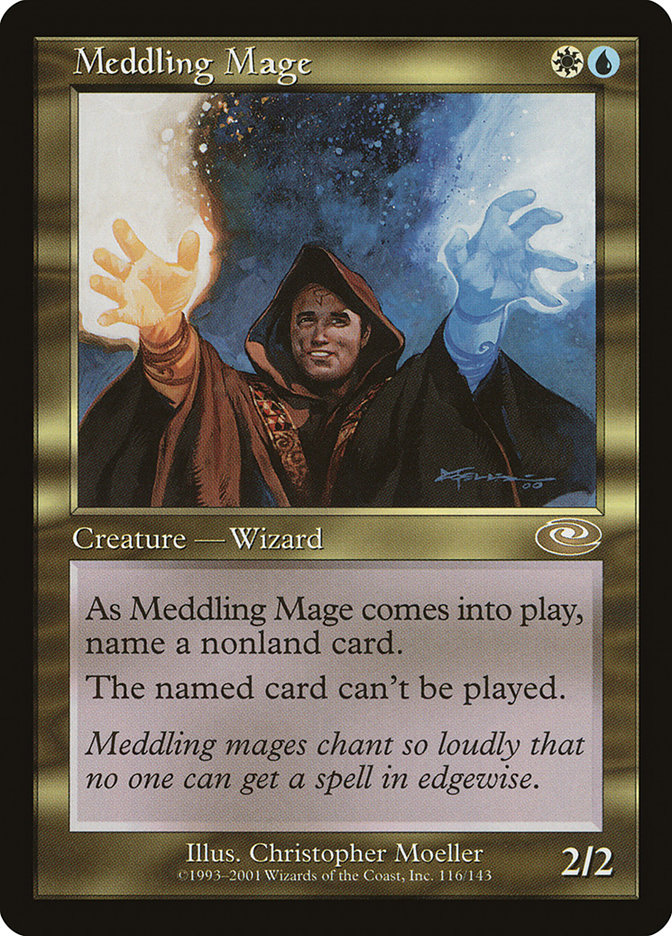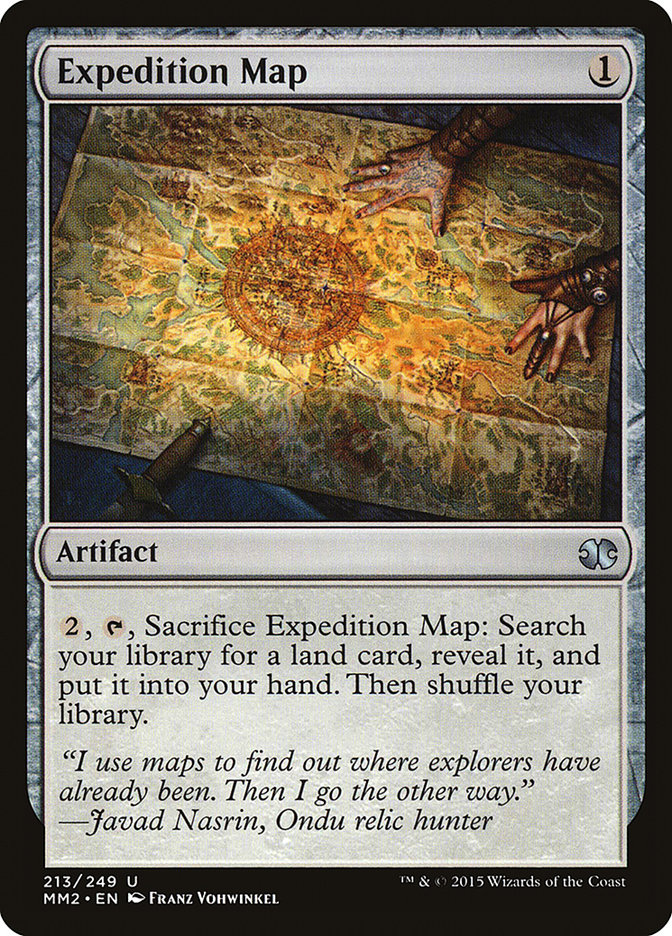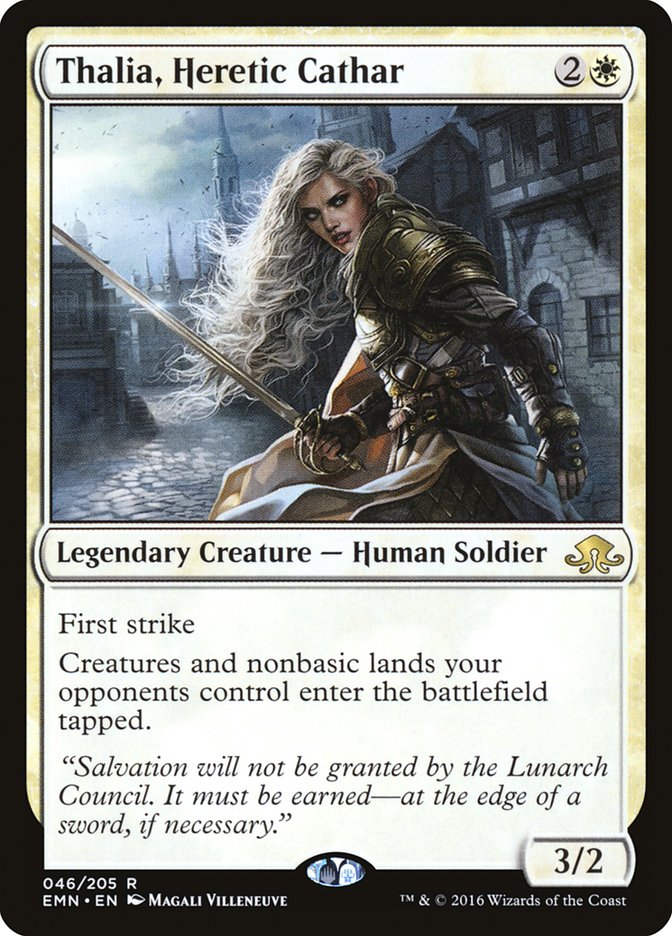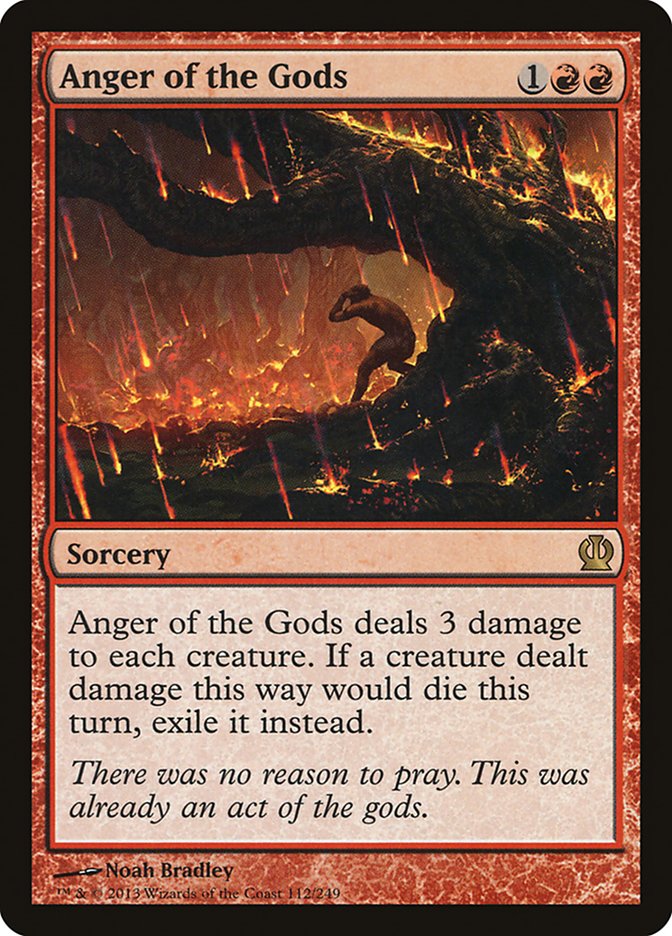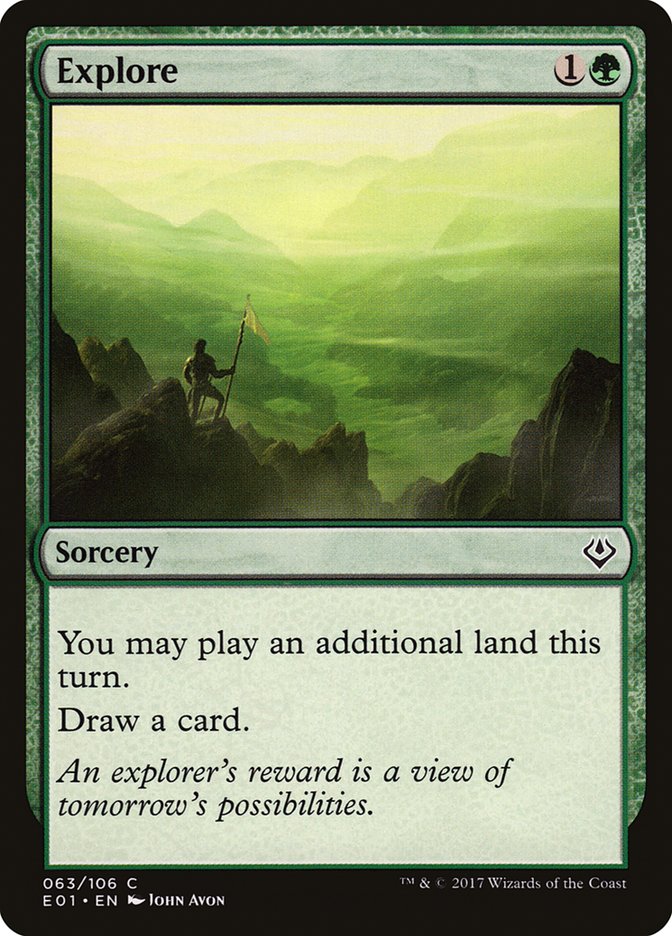Last weekend in Cincinnati I was able to live the dream: I took an unknown Modern deck to a tournament with my best friend and roommate Jeremy Bertarioni, went undefeated through the Swiss, played Jeremy in the semifinals, and won the event. I don’t believe I could have scripted it any better.

This weekend also reaffirmed some things that I’m learning about myself as a Magic player. I love getting an edge in events through innovative deckbuilding. I feel like I’m decent at playing the game, but I make my fair share of mistakes. I don’t think I got out of a single match this weekend without making a mistake or two. Blocking a 3/3 with my 3/3 and two 4/3s with my two 3/4s was…well, let’s say it was not exactly the highlight of my career.
But that’s combat in tribal decks. And to err is Human.
I do know that deckbuilding, sideboarding, and understanding my role in matchups are my biggest strengths. Nothing could have felt better than understanding this and leaning on those strengths to escape Cincinnati with a near-perfect record. I took Brennan DeCandio’s article last week as a challenge, and I definitely believe I came into this tournament with a significant edge.
Hopefully this article will tell you everything you need to know if you plan on picking this deck up and playing it yourself, which I highly recommend. This deck is very powerful and a blast to play.
Creatures (36)
- 4 Meddling Mage
- 4 Noble Hierarch
- 4 Champion of the Parish
- 3 Mayor of Avabruck
- 4 Thalia, Guardian of Thraben
- 4 Mantis Rider
- 3 Reflector Mage
- 4 Thalia's Lieutenant
- 2 Thalia, Heretic Cathar
- 4 Kitesail Freebooter
Lands (20)
Spells (4)

Humans lists have been a small presence in Modern for a while, but before this weekend they had yet to make a significant splash. Kitesail Freebooter and Unclaimed Territory, both from Ixalan, really pushed the deck over the top. Helpfully, each one highlights an important reason why this deck is so good.
Unclaimed Territory gives us access to twelve lands in our deck that tap for any color of mana when casting Humans. This allows us to select literally any Modern-legal Human to put in this deck without worrying about its color requirements. Because the card pool of Modern is so large now, we have access to a ton of very powerful Humans.
Based on the Humans that we ended up with, if we draw at least one of those twelve rainbow lands and another land that taps for white, we can cast any of our two-drop Humans. Any third land then unlocks most of our three-drops. Where previous lists had to make concessions via Mana Confluence or a fetch-heavy manabase, the current list has one of the cleanest, most pain-free manabases in the format.
The printing of Kitesail Freebooter unlocked a strong, disruptive gameplan that simply wasn’t available to older lists. The main reason I believe this deck to be so powerful is because it has the perfect balance of disruption and aggression. The deck is very capable of killing someone on Turn 4, disrupting them with Thalias, Kitesail Freebooters, and Meddling Mages along the way.
One of the most common questions I received over the weekend was why I decided to play Aether Vial instead of the more common Collected Companies that we saw in earlier versions of the deck.
The most common answer that I’ve seen people give is that the manabase can’t support it. We’re playing Ancient Ziggurat, which can’t cast Company at all, and only six true green sources in the deck.
This answer is true, but not the real reason I wanted to play Aether Vial over Collected Company. The main reason I want the Vials is because I was more interested in deployment velocity than card advantage in this deck. Collected Company is a good source of card advantage, but it makes you a little slower at deploying your threats than when you have Vial. A Turn 1 Aether Vial allows you to deploy a one-drop and a two-drop on Turn 2, and then a three-drop and a two-drop on Turn 3. This is crucial when you’re depending on your disruptive elements coming down in the first three turns of the game.
Mullen’s Mulligans
Mulliganing aggressively is fundamental to success in Modern, not just with this Humans list. It is, however, even more crucial to success with this deck than most. There will be a lot of hands in this deck that are mediocre: four lands and three two-drops, three lands with two Aether Vials and two creatures, and so on. I believe that any seven-card hand that isn’t powerfully curving out should be a mulligan. The deck has a very good chance of curving out and that ability is where much of the list’s intrinsic power comes from. It’s important to maximize the chance of that happening.
Post-sideboard, things get even more interesting with your mulligan decisions. Because the deck is made up of two parts, disruption and aggression, it’s important to figure out which half of the deck is more important in that particular matchup. If I’m playing against a combo deck like Storm or Ad Nauseam, my aggressive draw of Champion of the Parish into Thalia’s Lieutenant into Reflector Mage just isn’t going to get there. I’d want to mulligan into my disruptive pieces like Kitesail Freebooter, Thalia, or Meddling Mage.
The opposite is true if I’m playing against another creature deck. If I’m playing against Elves or Merfolk, I’d much rather have an aggressive beatdown draw than a hand full of Mages and Freebooters. Assess the role you want to take in each matchup and mulligan accordingly.
A good example of this was a hand I mulliganed in Game 3 of my quarterfinals match against Jessy Hefner on Death and Taxes.
The hand looks okay on first glance. It has Turn 1 Hierarch, a sideboard card, and even a Horizon Canopy to mitigate flooding. But the hand just doesn’t fit the gameplan I’m trying to enact in this matchup. The hand is missing the density of big aggressive cards that I knew I needed to overpower my opponent. The best cards that I’m looking for are early Champions of the Parish that get out of control, Mantis Riders, Reflector Mages, and Thalia, Heretic Cathars.
I mulliganed a lot over the course of this tournament and noticed that a lot of my opponents kept hands that they shouldn’t have kept as well. I attribute a lot of my success that weekend to mulliganing more proactively than most of my opponents.
Read Them Like a Book
The most difficult part of playing this deck optimally is figuring out what to name with Meddling Mage. [If this deck becomes prominent, how often will you name Meddling Mage? Against Chris Pikula, could you help yourself? — Ed.]
Sometimes your decision is easy because it’s informed by Kitesail Freebooter or Reflector Mage, but a lot of the time you’re in the dark. There are, however, a lot of things you can pay attention to that can inform your decision.
I spend a lot of time staring at my opponents, trying to get into their heads. Pay attention to where they are looking. Are they looking at their graveyard? Snapcaster Mage. Are they looking at your creatures? Removal spell. Are they looking at life totals? They’re probably trying to race. The key is to always pay attention. They’ll probably be focused on you when you’re resolving your Meddling Mage and figuring out what to name, but if you’ve paid attention to them making decisions on their turn, you’ll be much more informed.
Other times, and probably more often, tells can come from in-game decisions that your opponent is making. Always consider why your opponent is making their plays the way they are, and how that can tip you off to what they might have planned. There were some cool examples from this past weekend that I can pull from.
My Tron opponent led on Urza’s Mine, Expedition Map. I cast a Noble Hierarch. He cast an Urza’s Tower and passed. I cast Thalia, Heretic Cathar. He tanked before popping his Map for another Urza’s Tower. On his turn, he played his second Urza’s Tower tapped and passed back.
It became clear to me that he already had the third Tron piece, but really wanted to have eight mana available to him on his next turn through my Thalia, Heretic Cather. This is an indication that he has an Ugin, the Spirit Dragon in his hand, since he gave up the ability to have three extra mana on this turn in exchange for one additional mana on the next.
On my next turn, I cast Meddling Mage naming Ugin, deployed a Thalia’s Lieutenant, and cracked in for five damage. His Wurmcoil Engine entered the battlefield tapped, and I was able to finish him off with a Reflector Mage. I easily took the game, but would never have defeated his Ugin.
Another fun play that I made was against TitanShift. I led with Aether Vial, and he played a tapped land and passed. I cast a Kitesail Freebooter, and he showed me a hand of Anger of the Gods, ramps spells, and lands. I took the Anger. On his turn, he cast an Explore, played a fetchland, and passed. I ticked my Vial up to two and went to attack with my Freebooter. He said, “Before damage, I’ll fetch.” I responded by vialing in a Meddling Mage and naming Lighting Bolt, much to my opponent’s dismay.
Sideboard Guide!
Now for the part you’ve all been waiting for: the sideboard guide!
Affinity
Out:
In:
It’s important to look for a hand that can race well in this matchup. Your opponent will be able to fight through your Vithian Renegades if the game goes long, so you need to be able to put the pressure on. Mulligan accordingly.
U/R Gifts Storm
Out:
In:
This is probably your best matchup, as the current builds of Storm have no maindeck answer to a Meddling Mage naming Grapeshot. Post-sideboard, however, you’ll need to be wary of Blood Moon and be more creative with your names on Meddling Mage. You can use your Meddling Mage to protect your Canonist or Thalia, or you can keep them off Gifts to find their answers. Don’t keep a hand that has no disruption.
Eldrazi Tron
Out:
In:
Disruption isn’t going to go very far in this matchup, so you need to look for hands that can put pressure on quickly. An early Champion of the Parish can be very difficult for an Eldrazi Tron player to deal with, as it can get out of control very quickly.
Out:
In:
Sideboard out Vials in the matchups where they are trying to attrition you out. The key to this matchup is maintaining a battlefield state that is threatening lethal so they don’t have the opportunity to attack and race with their creatures.
TitanShift
Out:
In:
It might look a little odd to sideboard out Reflector Mage against a Primeval Titan deck, but generally you aren’t going to beat a resolved Primeval Titan regardless. Once they get to the point where they can kill your creatures with land drops, you aren’t winning unless they’re dead the following turn.
I don’t bring in Xathrid Necromancers because generally their sweeper of choice is Anger of the Gods. If you notice that their sweeper is Sweltering Suns instead, then you can bring in two Xathrid Necromancers by cutting the last Reflector Mage and a Mayor of Avabruck.
Jeskai Control
Out:
In:
While this is in some ways an attrition matchup, I still think keeping in Aether Vial here is important because it lets you deploy your hand more quickly, and one of the only ways I can see beating this deck is by getting under them with an aggressive draw that kills them before they can seize control.
B/G Tron
Out:
In:
I’ve found that aggression is more important than disruption in this matchup, so make sure the hands you keep can end the game quickly.
Burn
Out:
In:
I’ve found this matchup to be pretty solid overall because a lot of your cards interact with theirs in a good way. Thalia makes things difficult for them, while Meddling Mage and Kitesail Freebooter force them to trade their spells for your creatures instead of your life points.
***
I hope this article gave you the tools you need to pick up Humans and crush your next event. Good luck! I promise you’ll enjoy it.


